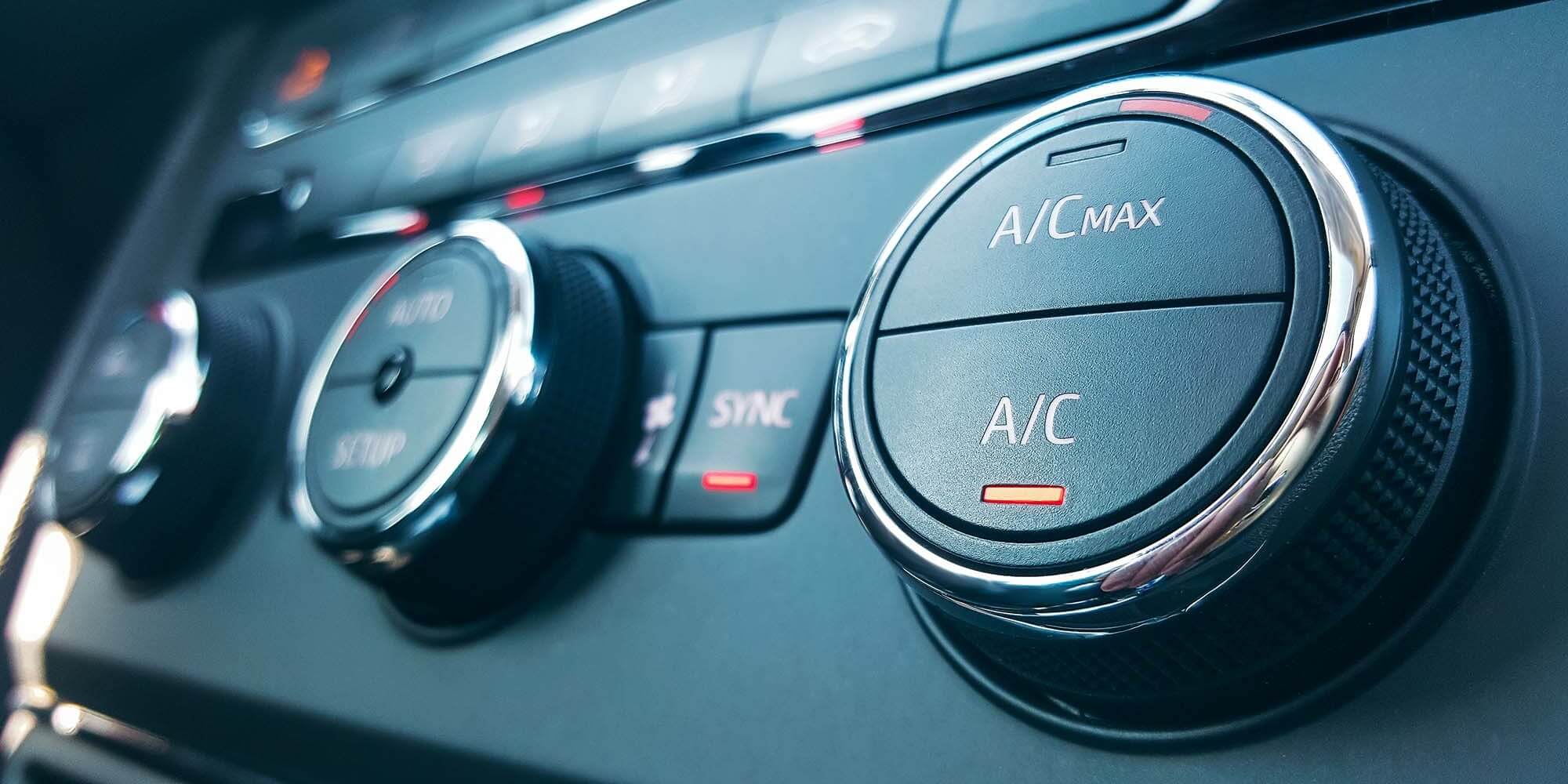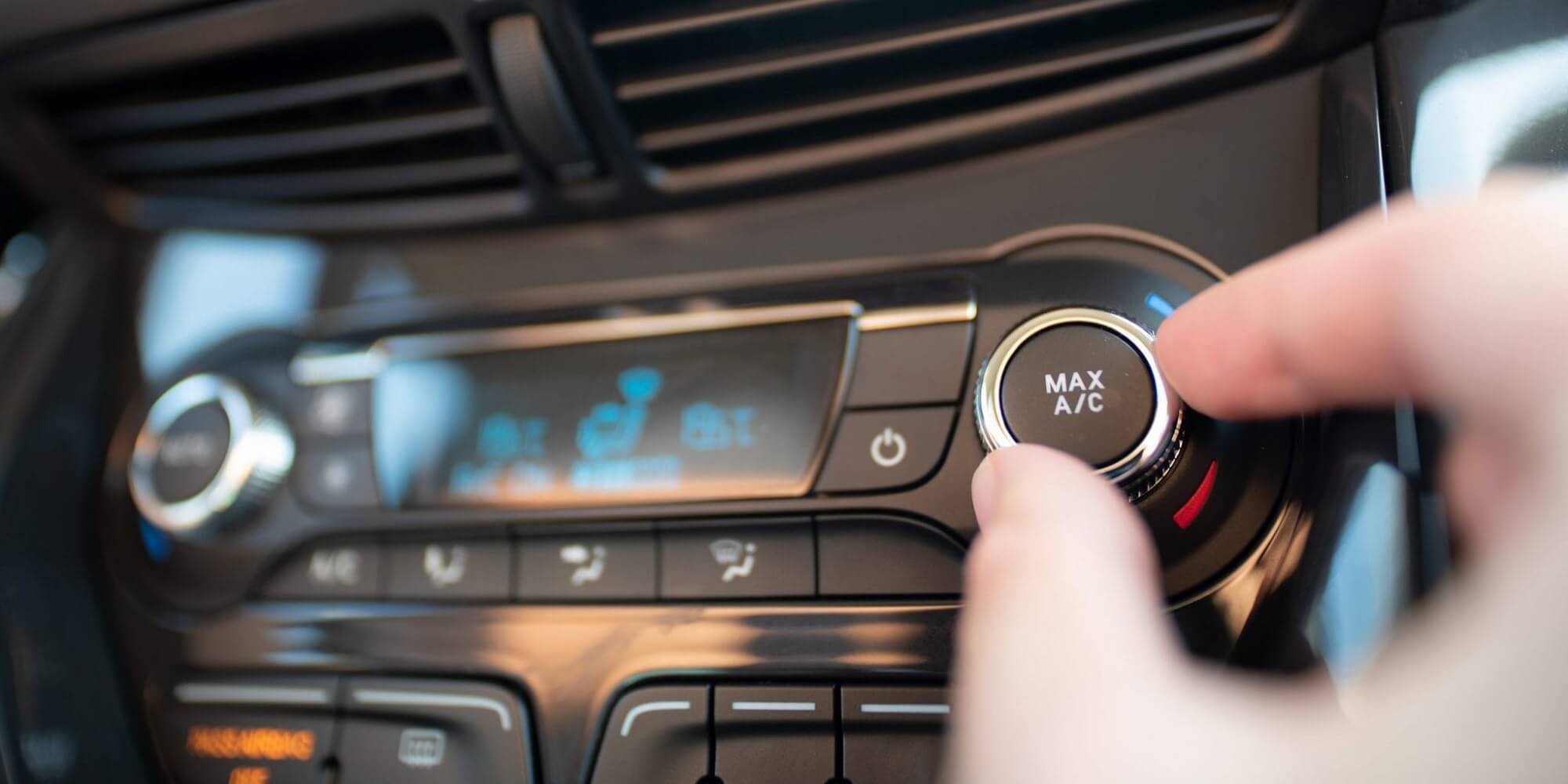Car Air Conditioning Components – What does this do?
Most modern cars come with air conditioning as standard. You may think climate control is the same thing – but it is not!
The two systems work in different ways, and there's a price difference between them (air con is cheaper than climate control). Here, we explain the difference…
Air Con
Air conditioning cools air and allows the inside of the car to be colder than the outside. This is why cars with air con are so welcome in summer – as the sun blazes, chilled air from a compressor offsets it within the vehicle.
To get the maximum blast of air-conditioned flow, press the air con button (usually depicted by a snowflake-like symbol) and turn the temperature dial to 'C' or the blue zone of its range. If you want it warmer, turn it towards 'H' or the red zone: this gradually mixes warmer air with the air-conditioned charge.
As ambient temperatures, the amount of sunshine and even the car's speed all change, you'll need to alter the temperature dial to maintain an even temperature inside the vehicle. Meaning drivers have to sometimes adjust it quite frequently – and this can even lead to battles with their passengers who prefer a different temperature!
Even so, air con is invaluable: it is why you now rarely see modern cars with their windows down when the sun is shining…
Climate control
Think of this as 'smart air con'. Climate control still cools the air in summer but does so intelligently. You set a specific temperature on the dial (say, 22 degrees), and a computer uses sensors to vary air-con output to maintain this.
It's real 'set and forget' stuff – some owners say they set the temperature once when they bought the car new and haven't touched it again in all the time they've owned it.
No matter if it is +40 degrees or -5 degrees outside, your car's interior will always be kept at the temperature you set. It does this by smartly blending cold and warm air, constantly adjusting the balance to maintain an interior climate.
Climate control also often offers 'dual zone' control: the passenger can set a different temperature zone than the driver. Some more expensive cars have multi-zone control, so those in the back can create their temperature cocoon too.
For this reason, climate control is more expensive than standard air con. It requires sensors, digital displays and complicated algorithms to juggle fan speed, temperature flow and air-con usage.
There is an added benefit to climate control, though – it has the potential to save you money. Because it only uses the air con when needed, it may consume less power than standard 'dumb' air con, which runs unchecked constantly.
Some modern climate control systems also have an 'economy' setting that does all the climate-controlling work without using the air con system (or using it only minimally). The car won't be as cold in summer, but you probably won't notice when it's colder – and you'll save a lot more fuel as you go, too.
Needless to say, if you buy climate control, you're also purchasing an air-con system. Just a much more intelligent one…
Dual Climate Zones
Summary: If you're shopping for a car and see the term "dual-zone climate control," it refers to a climate control system with two sets of controls: one for the driver and one for the front passenger.
Some cars offer "tri-zone" or even "quad-zone" climate control. These third and fourth zones are for rear passengers. Tri-zone climate control means second-row passengers share a set of controls. Quad-zone climate control can mean that each side of the second row gets individual climate controls, just like the front -- or, in a 3-row vehicle, it can mean that both the second and third seating rows get their own "single-zone" climate controls.
However, the dual-zone climate control system is the most common by far. It typically features two temperature controls -- one on each side of the control unit -- so the driver and the passenger can create their own microclimates. Some cars also give the passenger a separate fan control and air-flow selector, whereas others limit the "dual" functionality to just that temperature knob.
Naturally, dual-zone climate control costs more than a traditional manual system, which inflates the vehicle price. Also, the sometimes complicated controls can make it hard to switch to "single-zone" mode on demand, which is annoying -- dual zones aren't much good when you're driving alone.
Generally, though, there's a lot to like about these systems.
What is the difference between car A/C and Recirculated A/C?
The button of a car with an arrow inside it means recirculating the air. Most cars have a switch or button that lets you choose between fresh air (a car with an arrow going into it) and recirculated air (a car with an arrow inside it going in a circle).
Essentially, using A/C with recirculated air means the car will get cold more quickly and will maximise the A/C's ability to keep the car cool inside. When the air is fresh, the A/C is constantly working to cool the hot air outside when bringing it into your car. In newer vehicles, you probably won't notice the difference (except that the air may smell stuffy if you use recirculated). This can make a substantial difference in older cars on a very hot day.
Is starting your car with the A/C bad?
Not at all. You may be, in some small way, reducing the life of your starter, but this would be pretty negligible.
When you start with the A/C switch on, you will be starting with the A/C Compressor clutch engaged, which means the starter must turn both the engine and the compressor; altogether, a rather trivial amount of force in comparison to the force needed to spin the motor with the compressor clutched disengaged.
Once you've gotten it started, the compressor would be robbing some non-zero percentage of the motor's power, just as the alternator and power steering pump would.
One could perhaps argue for some reduction in fuel economy during the startup process, but hey, you've got a cold car to get into.
To put this in perspective, think of hotter climates like North Queensland. Most cars have remote starters, and they leave their A/C on full-time so that the cabin is at a reasonable temperature when they start their vehicles from inside their house.


